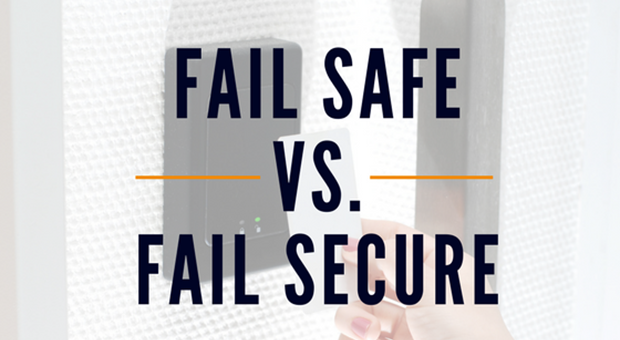What happens to an opening with electrified hardware when there is a loss of power or an activated fire alarm? It depends, is it a Fail Safe or Fail Secure product? Both are functions of electronic access control and refer to the status of the secure side (key side) of the door when there is a loss of power or a fire alarm. So what’s the difference? First, before we explain, it is important to understand we are talking about electronic access control. All door locking devices, with few exceptions, should allow free egress (exiting without obstruction or special knowledge), whether or not the door has electronic access control.
Fail Safe (FSA)
A Fail Safe product will become unlocked on the secure side (key side) of the door if there is a loss of power or activated fire alarm. This way people are able to freely enter the opening. Power is constantly needed to keep the door locked.
A Fail Safe option is commonly found on stairwell doors that require re-entry. This way if there is a loss of power or a fire alarm is going off, occupants can freely enter and exit the stairwell at any level to find the safest way to exit the building. It is important to note that with Fail Safe locks the area will not be secure when there is a loss of power or an active fire alarm, which could make it susceptible to crime or a security breach.
Fail Secure (FSE)
A Fail Secure product will become locked on the secure side (key side) of the door if there is a loss of power or an activated fire alarm. People are still able to freely exit, but cannot enter the opening from the secure side (key side). Power is needed to unlock the door, which means when power is lost a key is needed to manually override the lock.
Fail Secure options are the most common and are used when an area in a building or the entire facility needs to remain secure in an event of an emergency. Banks, pharmacies, retail, and healthcare facilities are just some examples of buildings that hold valuable products and information that is crucial to keep secure. During a power outage or fire alarm, occupants would still be able to freely exit these buildings, but would not be able to reenter the spaces equipped with Fail Secure products, therefore keeping the space secure.
There are no simple rules for when and where Fail Safe or Fail Secure devices should be applied. The type of electrified product being used such as electric strikes, electrified locks, or electrified panic hardware trim, and whether or not the door is fire rated are just some of the options and products that need to be discussed and considered. It is also important to research and/or understand the building codes in your area before making these decisions.
Did you know that LaForce has a team of security integration, fire door inspectors, and building code experts right on staff? We can help walk you through which openings should be Fail Safe or Fail Secure, to ensure that your building is secure as well as abiding by Life Safety Codes to allow for a safe escape in the case of an emergency. To get started on securing your facility, contact us and a representative will connect with you shortly.



Follow Us